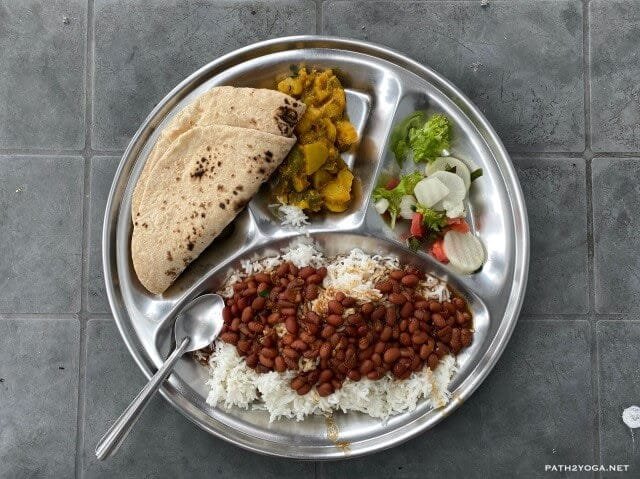
Sattvic food, deeply rooted in Ayurveda, is more than just a culinary tradition; it’s a philosophy that encompasses not just what we eat but how we approach nourishment.
Derived from the Sanskrit word “sattva,” meaning pure or harmonious, sattvic food is believed to promote clarity, balance, and overall well-being.
It’s characterized by its simplicity, freshness, and wholesomeness, emphasizing natural, unprocessed ingredients that are in harmony with nature.
At the heart of sattvic cuisine lie several guiding principles that shape its composition and consumption. These principles are grounded in the belief that food is not merely sustenance for the body but also nourishment for the mind and spirit.
Thus, sattvic food is prepared and consumed with mindfulness and reverence, acknowledging the interconnectedness of all aspects of being.
One of the central tenets of sattvic food is its emphasis on purity. This purity extends beyond the physical qualities of the food itself to encompass the manner in which it is grown, harvested, prepared, and consumed.
Sattvic food is ideally grown organically, without the use of synthetic pesticides or fertilizers, thereby preserving the integrity of the soil and the environment.
Moreover, it is prepared with care and attention, avoiding excessive processing, additives, or artificial flavors.
In terms of ingredients, sattvic cuisine prioritizes fresh, seasonal produce, preferably locally sourced. Fruits, vegetables, grains, legumes, nuts, and seeds form the foundation of sattvic meals, providing a rich array of vitamins, minerals, and antioxidants.
These ingredients are believed to possess sattvic qualities, meaning they promote purity, clarity, and vitality when consumed in their natural state.
Another fundamental principle of sattvic food is its emphasis on balance. According to Ayurveda, each individual possesses a unique constitution or dosha, comprising the elements of air (vata), fire (pitta), and water (kapha).
Imbalances in these doshas can lead to various physical and mental ailments. Sattvic food is designed to help restore and maintain equilibrium within the body and mind, supporting overall health and well-being.
To achieve this balance, sattvic meals typically include a variety of tastes, textures, and colors, ensuring that all six tastes—sweet, sour, salty, bitter, pungent, and astringent—are represented in each meal.
By incorporating these diverse flavors, sattvic food stimulates the senses, satisfies cravings, and promotes satiety, preventing the overconsumption of any one taste or nutrient.
Furthermore, sattvic food advocates mindful eating practices, encouraging individuals to eat slowly, chew thoroughly, and savor each bite.
This approach not only enhances digestion and nutrient absorption but also fosters a deeper connection with the food and its source.
By cultivating awareness and gratitude for the nourishment we receive, we honor the inherent sacredness of food and its role in sustaining life.
Beyond its physical and physiological benefits, sattvic food is also revered for its spiritual significance. In Hinduism, food is considered sacred and is often offered to deities as part of religious rituals and ceremonies.
Sattvic offerings, such as fruits, flowers, and grains, are believed to please the gods and evoke their blessings, fostering spiritual growth and enlightenment.
Moreover, sattvic food is thought to have a subtle yet profound effect on consciousness, helping to calm the mind, elevate the spirit, and facilitate meditation and self-reflection.
By consuming foods that are pure, light, and nourishing, individuals can cultivate sattvic qualities within themselves, such as clarity, compassion, and inner peace.
In addition to its individual benefits, sattvic food also has broader implications for society and the environment.
By promoting sustainable farming practices, local food systems, and traditional culinary knowledge, sattvic cuisine contributes to the preservation of biodiversity, cultural heritage, and ecological harmony.
Moreover, by prioritizing plant-based ingredients over animal products, sattvic food supports animal welfare, reduces greenhouse gas emissions, and mitigates the environmental impact of food production.
Conclusion
sattvic food embodies a holistic approach to nourishment that extends beyond the physical act of eating to encompass the mind, body, and spirit. Grounded in principles of purity, balance, and mindfulness, sattvic cuisine offers a pathway to optimal health, spiritual growth, and environmental stewardship. By embracing sattvic food, individuals can cultivate greater harmony within themselves and with the world around them, fostering a more sustainable and compassionate way of living for generations to come.












Leave a comment: